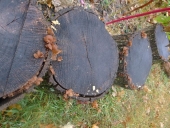
 6
6




Regards, Scott

 6
6




Some places need to be wild














Some places need to be wild




Creating edible biodiversity and embracing everlasting abundance.










 1
1




Some places need to be wild




Regards, Scott










 2
2




Some places need to be wild
 1
1


















Some places need to be wild




Regards, Scott














Some places need to be wild




Regards, Scott










 1
1




Some places need to be wild














Some places need to be wild




Regards, Scott














Some places need to be wild




Regards, Scott
 1
1


















Some places need to be wild


















Some places need to be wild
 2
2




 2
2




 4
4




This is all just my opinion based on a flawed memory

 4
4








If there is one thing the Wizard of Oz has taught me, it is not to trust school teachers on bicycles.
 2
2








If there is one thing the Wizard of Oz has taught me, it is not to trust school teachers on bicycles.










 1
1




Some places need to be wild
 2
2












 1
1




J Rowe wrote:Hi John,
With a few years of growing under your belt do you have any personal insight on your questions below, I have similar curiosity. Thanks!
I was wondering if someone would have certain experience with some of my questions:
1) can you endlessly regrow wine caps just by adding new wood chips every year? Or will the flushes diminish gradually to a point you need to buy fresh spawn? Has anyone kept their original spawn going for more than a few years?
2) Does anyone know the effect of wood ash on wine caps mycelium? I'm thinking of putting a thin layer of ash on the top of the beds gradually. Slugs love to dig in my wine cap/mulch beds and lay thousands of eggs. I found out some mushrooms flourish on ashes, but was wondering if someone had any experience with adding ashes to wine cap beds as a top layer.
Thanks in advance!

|
Sunglasses. AKA Coolness prosthetic. This tiny ad doesn't need shades:
The new permaculture playing cards kickstarter is now live!
https://www.kickstarter.com/projects/paulwheaton/garden-cards
|





